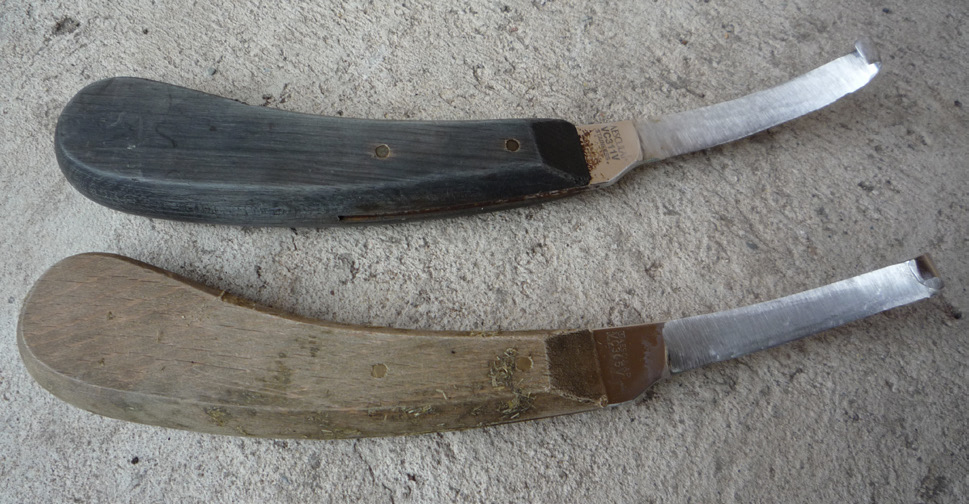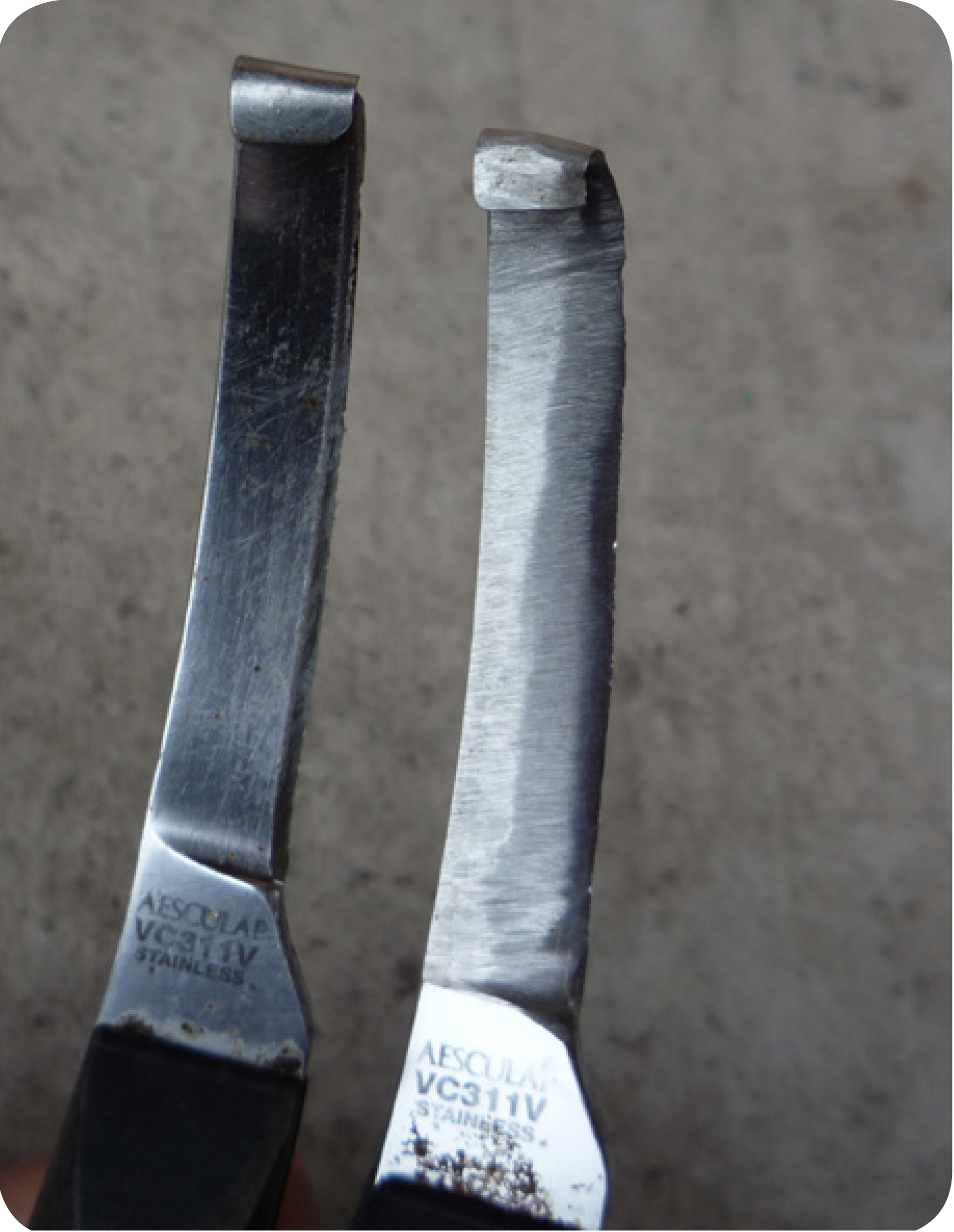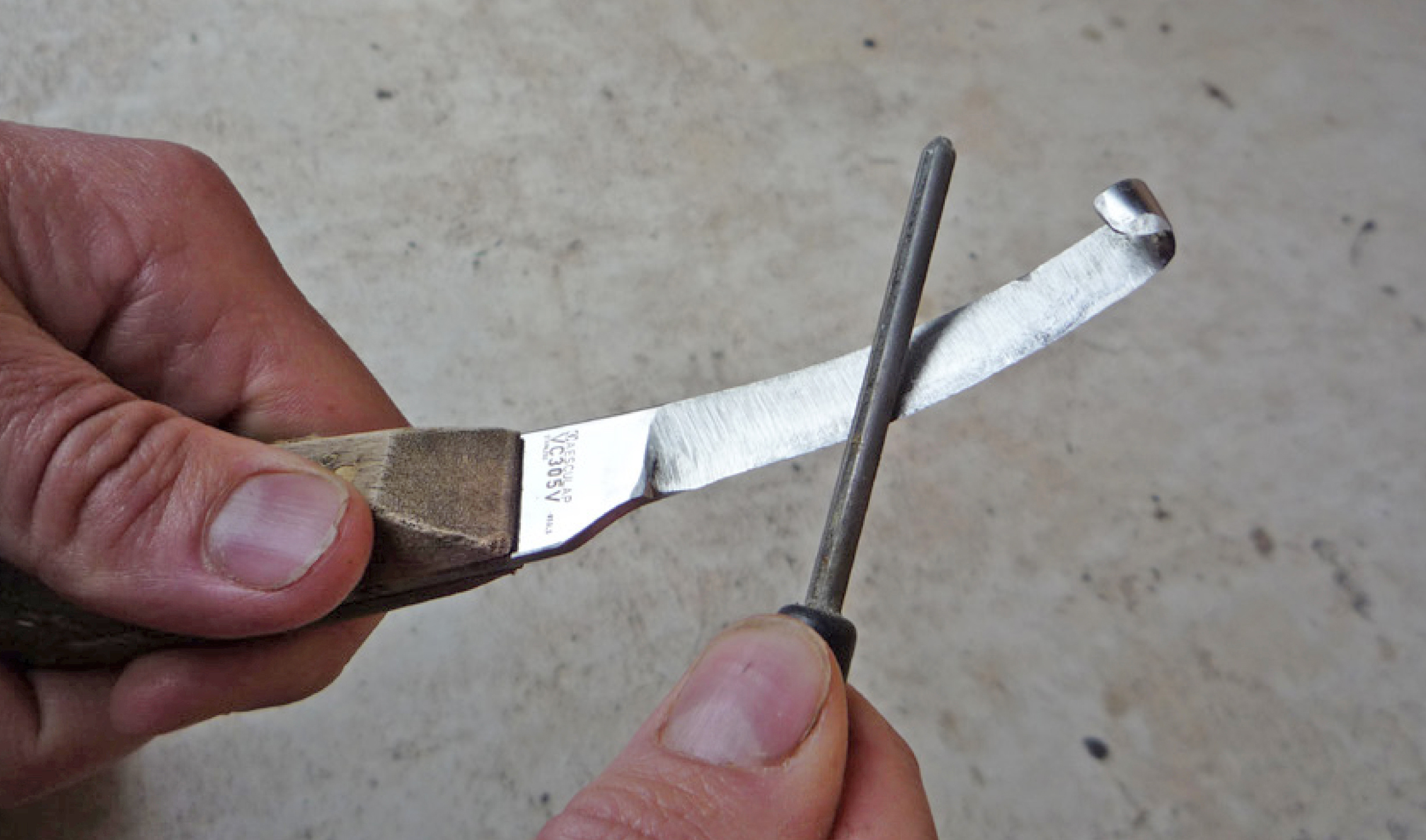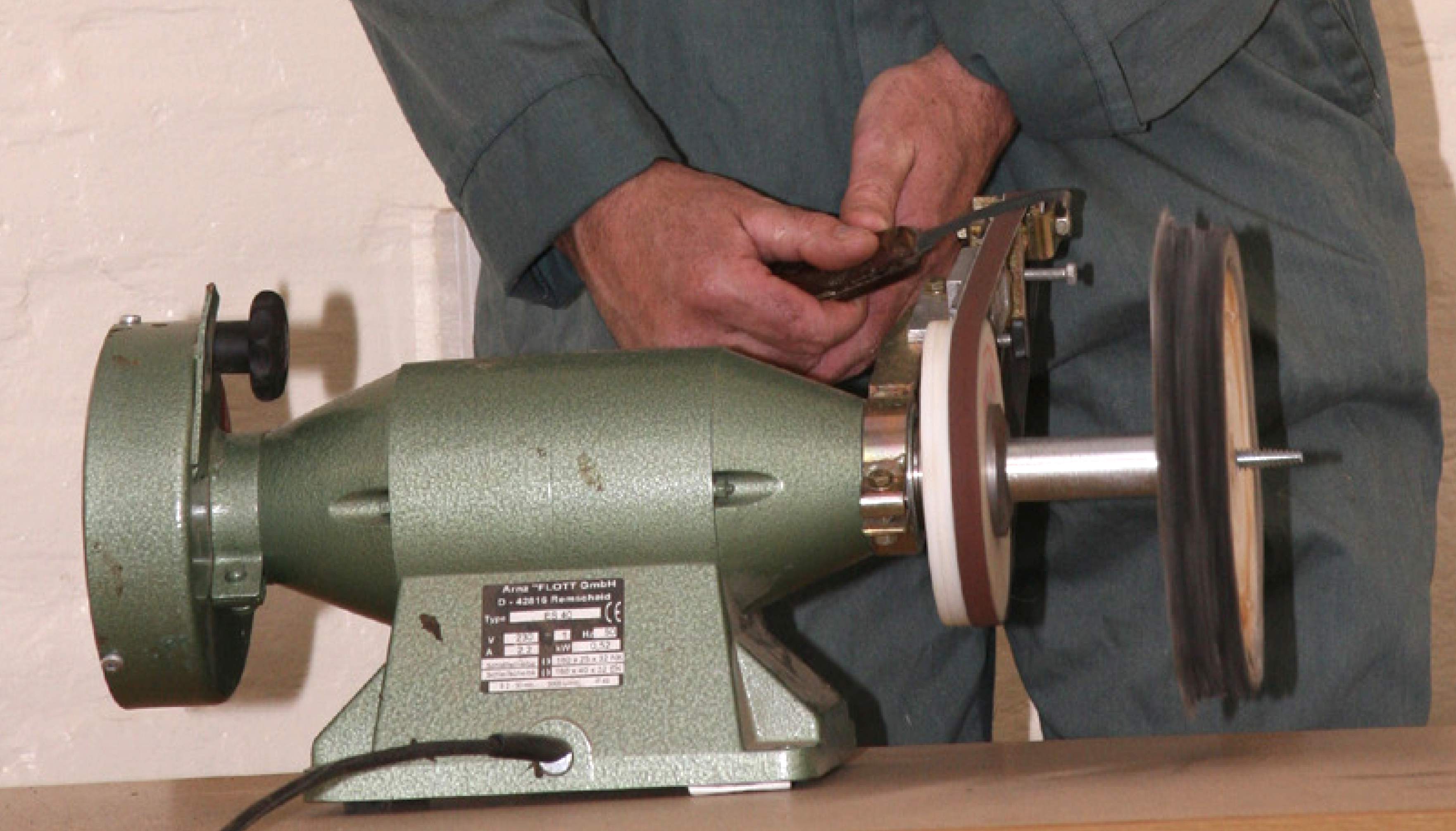- Home
- Knowledge library
- Cattle foot care: what’s in your tool kit?
Cattle foot care: what’s in your tool kit?
Purchasing the right knives and maintaining them properly will keep you safer and make your job easier when trimming cattle feet. Make sure you’ve got all the essential items in your kit to care for your cows’ feet and prevent lameness in your herd.
Having the correct equipment is half the job for good hoof care
- Antibiotic spray.
- Foot blocks – there are many different types available and different sized blocks for different sized feet. Shown here is a fitted shoe type and a wooden block.
- Gloves – thick latex gloves are ideal.
- Wrist protectors – the neoprene type are inexpensive and easy to clean.
- Hoof knives – 1 x left-handed and 1 x right-handed, with a single-edged blade. Narrow blades are generally easier to use and sharpen.
- Hoof knife protectors – a length of plumbing pipe, as shown here, or an old milking machine liner will help keep blades sharp and safe.
- Hoof trimmers – quality nippers are a better investment than clumsy choppers.
- Hoof testing pliers – an under-used but essential bit of kit, which can make life easier.
- Knife sharpener
- Measuring tool – to get the correct toe length and sole thickness.
.jpg)
Anti-inflammatories
Recent research suggests that lameness cure is maximised with anti-inflammatory (NSAID) treatment, alongside therapeutic trimming and diseased claw elevation, using a block for mildly lame cows. Speak to your vet for advice.
Knife know-how
Both of these knives are left-handed (see image below). The one at the top has a hardened stainless-steel blade.

More expensive knives have blades of harder steel: they stay sharper longer but are harder to sharpen.
Most new knives need pre-sharpening before use. A grinding wheel or angle grinder should be used to give the cutting edge a more gradual taper, like the blade on the right (below). This will ensure the edge stays sharper for longer and will be easier to resharpen.

Some important things to remember when sharpening knives:
- Never sharpen the back side of the knife
- Touch up the blade regularly
- Keep the blade tapered at an angle of 15-20o
A purpose-made sharpener has a narrow sanding belt and a cloth polishing wheel. It turns in the opposite direction from bench grinders. Wear goggles and always ensure the sanding belt rotates away from you.


Remember to disinfect hoof knives between cows, to reduce the risk of spreading digital dermatitis from cow to cow.
Find out more about keeping your knives clean

